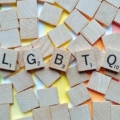The Irony of Vladimir Putin’s Sieges
Putin’s family suffered greatly in the Nazi siege of Leningrad, and now he’s sieging Ukrainian cities.
Vladimir Putin was born and raised in Leningrad, or what was formerly known as St. Petersburg. No doubt, as with all of us, his childhood experiences set the stage for his adult beliefs. Unlike most Americans, however, he was born and raised in a city destroyed by war.
One of the most horrendous sieges in world history was the Third Reich’s siege of Leningrad, which began in September of 1941 and continued for nearly 900 days. The horror is detailed in the book, The 900 Days: The Siege of Leningrad, by Harrison E. Salisbury.
It is estimated that between one and two million Russians died in the siege, not only directly from shelling but also from starving or freezing to death as many tried to escape over the only exit route across the ice and frozen tundra. During the first winter of the siege, average low temperatures hovered around minus 30 degrees Fahrenheit.
Leningrad residents used movable cast-iron wood-burning stoves to keep from freezing in their apartments. Anything that would burn was used as fuel, including furniture, books, doors, and window trim.
Putin’s mother survived the siege. As a soldier in the Red Army, his father suffered debilitating leg injuries in fighting the Germans on the outskirts of Leningrad and returned to the family’s apartment for recuperation.
Born in 1952, Putin missed the siege but not the aftermath. Leningrad was still largely in ruins at the time, and so were most families. There were twice as many Russian women of child-bearing age than men after the war. Putin was fortunate to have two parents who had survived both the siege and the war.
An even larger number of Russians had been killed in the Battle of Stalingrad than in the siege of Leningrad. The city was turned to rubble in six months, beginning in August 1942, from indiscriminate German bombing and shelling. Germans were eventually turned back, but only after heroic close-quarters fighting by the Russians. The 1993 German movie “Stalingrad” did a good job of capturing the brutality.
Although the numbers have been disputed, it is estimated that 20 million Soviet civilians and military died in the Second World War. This was on top of the millions who were starved or killed in purges and gulags by the state under Stalin.
Two lessons come from this. First, Russians excel at suffering. As such, it’s probably not a winning proposition for the West to get into a sanctions contest with them to see who can suffer the longest. Second, people throughout history, regardless of nationality, have been willing to fight to the finish and see their cities destroyed rather than surrender to an invading army. Putin doesn’t seem to have learned the second lesson, as evidenced by him not expecting much resistance when he attacked Ukraine.
Let’s return to the story of Putin’s life to see if we can figure out why he didn’t learn that lesson.
Putin’s childhood and rise to power are described in a fascinating book published in 2012: The Man Without a Face: The Unlikely Rise of Vladimir Putin, by Masha Gessen. Much of the following comes from the book.
During Putin’s childhood, he and his parents lived in a tiny rundown apartment in a shabby multi-story housing complex. In the center of the complex was a small courtyard surrounded on four sides by the exterior walls of the complex. The courtyard was littered with trash and barren of greenery. Thugs would hang out in the courtyard and fight each other for dominance. In spite of his smaller size, Putin was ferocious and usually won the fights. He would later proudly say that he was a hooligan.
At the age of ten or eleven, Putin took up a Soviet form of martial art that is a mix of judo, karate, and wrestling. It helped to transform him from a hooligan to a goal-directed, industrious adolescent.
One of his goals was to become a KGB agent, but he found that he would need a college degree, which would be problematic given his mediocre grades in primary and secondary school. Through grit, determination, and intense studying for the college entrance exam, he was accepted by Leningrad University, one of the top three prestigious universities in the Soviet Union.
After graduation, Putin was accepted into the KGB, and, following extensive training, was sent to Dresden in East Germany. It wasn’t the glamour posting he had expected. Apparently, he wasn’t held in high enough esteem to be posted to the center of KGB spycraft, East Berlin, or to the West as a spy. To make matters worse for Putin, the KGB had become a bloated, bumbling bureaucracy, like much of the Soviet government. Putin and his fellow agents spent their days writing voluminous reports, which went unread as they were sent up the chain of command.
A succession of upheavals would severely bruise his national pride and threaten his career. The Berlin Wall fell in 1989, a year later Germany was reunified, Soviet satellite countries went on to declare independence, and Mikhail Gorbachev, who wanted to modernize the Soviet economy with his perestroika and glasnost but not end communism, inadvertently unleashed a democracy movement that led to his resignation on December 25, 1991, and to the dissolution of the Union of Soviet Socialist Republics. Gorbachev was replaced as president by the former mayor of Moscow, Boris Yeltsin.
The probable lesson for Putin was that democracy and other Western values can spread uncontrollably once unleashed from authoritarianism.
During the upheavals, Putin had returned to Leningrad as a KGB officer, and in a bizarre twist, would become an assistant to Anatoly Sobchak, a pro-democracy leader who was the chairman of the Leningrad City Council. Did Putin spy on Sobchak for the KGB? If so, there is no documentary evidence of it, and, besides, Sobchak knew that Putin was in the employ of the KGB.
Meanwhile, Boris Yeltsin was elected for a second term in 1996, but by 1999, his popularity had plummeted to single digits. Influential Russians began looking for someone who could replace him. One of them was Boris Berezovsky, an uber-wealthy oligarch. Here’s what The Man without a Face says about him:
Berezovsky was made in the same mold as other early [Russian] entrepreneurs. Like all of them, he was very intelligent, well educated, and a risk lover. Like most of them, he was Jewish, which had marked him as an outsider from the time he was a small child. Like all of them, he had outsize ambition and boundless energy. He was a mathematics Ph.D. who had started in business with a car import-export and service company.
Berezovsky had come to know Putin when he had arranged to open a service station in Leningrad. Putin impressed him because “He was the first bureaucrat who did not take bribes.” (But Putin would later run a kleptocracy as president.) After Putin had moved to Moscow in 1996 to take a job in the Kremlin, he and Berezovsky saw each other frequently, including at the exclusive club Berezovsky belonged to in the center of the city.
To fast forward, Berezovsky and other power brokers convinced Yeltsin to name Putin as prime minister of Russia, which he did on August 9, 1999. Putin was their top choice because he was relatively unknown, was young and energetic, and carried no political baggage, since he had not come up through the ranks of the Communist Party. Putin was essentially a blank slate upon which politicians and the Russian people could project whatever attributes they wanted in a leader.
In a shocking development four months later, Yeltsin appeared on Russian television on New Year’s Eve to announce his resignation and his appointment of Putin as acting president until the election in three months. At midnight, Putin appeared on television and spoke for three and a half minutes. Of course, he would go on to win the election.
And that’s how a political novice became the president of a nation with a huge nuclear arsenal, the largest landmass of all nations, a national inferiority complex, and with a history of suffering.
That still leaves an important question: Why was Putin, who grew up in a city destroyed by war, willing to invade Ukraine, lay siege to its cities, and inflict death and destruction on its citizens?
The answers are conjectural:
– The siege of Leningrad taught him that Russia needs a buffer between itself and the NATO nations to the west.
– He wants to restore the prestige and power of the Russian empire and the borders of the Soviet Union.
– He believes that Ukraine rightly belongs to Russia, based on history and shared ethnicity.
– He’s still a thug at heart, or a psychopath, or a megalomaniac.
– He has the same psychological disorder that compels abused children to grow up to be abusive parents. His parents and other Leningraders suffered horrendous abuse, so in a turnabout that only psychologists can fully understand, he feels psychologically compelled to inflict abuse on others.
Given how irrational the Ukraine invasion seems, the last two answers might be closer to the truth.




